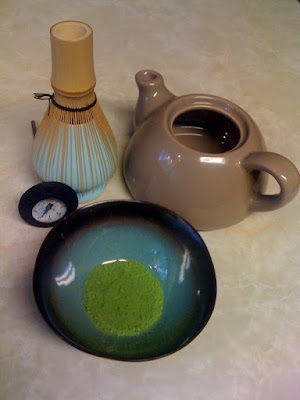Please know I am not a Matcha expert and this is only the info that I have found so far. As with all of our blog this is designed to be a beginners walk along the discovery of tea. I am still learning and loving every bit of it. So here we go, into the wonderful world of Matcha we dive.
Matcha is the oldest and most premium variety of green tea in Japan - the mother of all green tea!
Matcha has been used by Buddhist monks since ancient times. The monks produce natural remedies from different plants. Since tea was known as medicine from its discovery, it was natural for Buddhist monks to powder it as they would powder other plants to obtain traditional Chinese medicine. This is how Matcha was born.
In 1191 Zen Master Eisei brought the new and revolutionary idea of drinking tea from China to Japan. Eisai traveled throughout the country and planted tea. In his book "Kissa yojoki" Eisei writes "Tea is the ultimate mental and medical remedy and has the ability to make one's life more full and complete. Tea has an extraordinary power to extend someone's life. Everywhere people plant tea, long life will follow". From this point on, Matcha became the "secret medicine" of Buddhist monks and the imperial court.
In the 16th century another Zen-master shaped the image of tea in Japan: Sen-no-Rikyu invented the tea ceremony. This highly sophisticated cultural art of drinking tea has greatly influenced the image of Japanese tea in the west. The tea that is exclusively used in the famous Tea Ceremony is Matcha green tea. As the Tea Ceremony became more desirable as an art form, Matcha became popular among the powerful samurai class in Japan. For centuries, Matcha remained the secret tea of Japan's elite - now it has been rediscovered for modern times and Aiya is proud to share this luxurious experience with you.
Matcha is made from shade-grown tea leaves also used to make gyokuro. The preparation of matcha starts several weeks before harvest, when the tea bushes are covered to prevent direct sunlight. This slows down growth, turns the leaves a darker shade of green and causes the production of amino acids that make the resulting tea sweeter. Only the finest tea buds are hand picked. After harvesting, if the leaves are rolled out before drying as usual, the result will be gyokuro (jade dew) tea. However, if the leaves are laid out flat to dry, they will crumble somewhat and become known as tencha (碾茶). Tencha can then be de-veined, de-stemmed, and stone ground to the fine, bright green, talc-like powder known as matcha
It can take up to one hour to grind 30 grams of matcha.
Note that only ground tencha qualifies as matcha, and other powdered green teas, such as powdered sencha, are known as konacha (粉茶, lit. "powder tea")
My personal love for Matcha goes beyond its great health benefits, it has a wonderful vegetative flavor with a smoothness that I have not found in any other tea. Now it also comes at a high price, Matcha is one of the most expensive teas out there, but it is worth it.
Prior to use, the matcha is often forced through a sieve in order to break up clumps. There are special sieves available for this purpose, which are usually stainless steel and combine a fine wire mesh sieve and a temporary storage container.
A special wooden spatula called a Chashaku is used to force the tea through the sieve, or a small, smooth stone may be placed on top of the sieve and the device shaken gently.

If the sieved matcha is to be served at a Japanese tea ceremony, then it will be placed into a small tea caddy known as a chaki. Otherwise, it can be scooped directly from the sieve into a tea bowl.
Pour 3 oz. of hot (not boiling, about 80 °C or 176-185 °F) water .
The mixture is then whisked to a uniform consistency, using a bamboo whisk known as a chasen. There must be no lumps left in the liquid, and no ground tea should remain on the sides of the bowl. Make sure that you whisk from the center of the bowl in a M pattern breaking any large bubbles and remove the whisk from the center of the bowl.
Since Matcha is a power it will not dissolve in the water it is simply suspended in the hot water so try not to wait to long when drinking it will begin to settle in the bottom of the bowl.
this is a mixture of my own photos and ones I got online:
http://i545.photobucket.com/albums/hh381/IdentiTEA/Pics%20for%20Blog/UjiMatcha4.jpg




